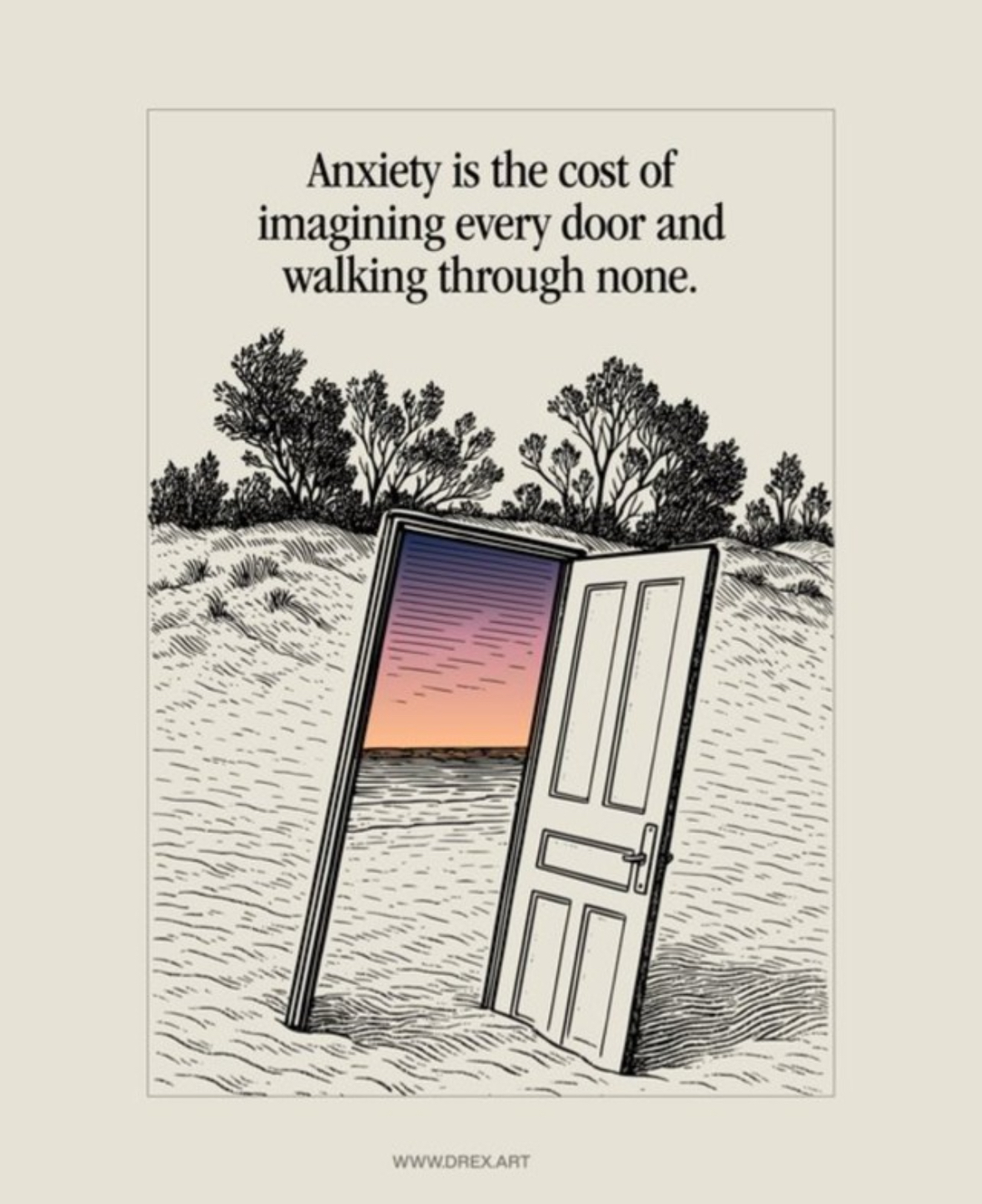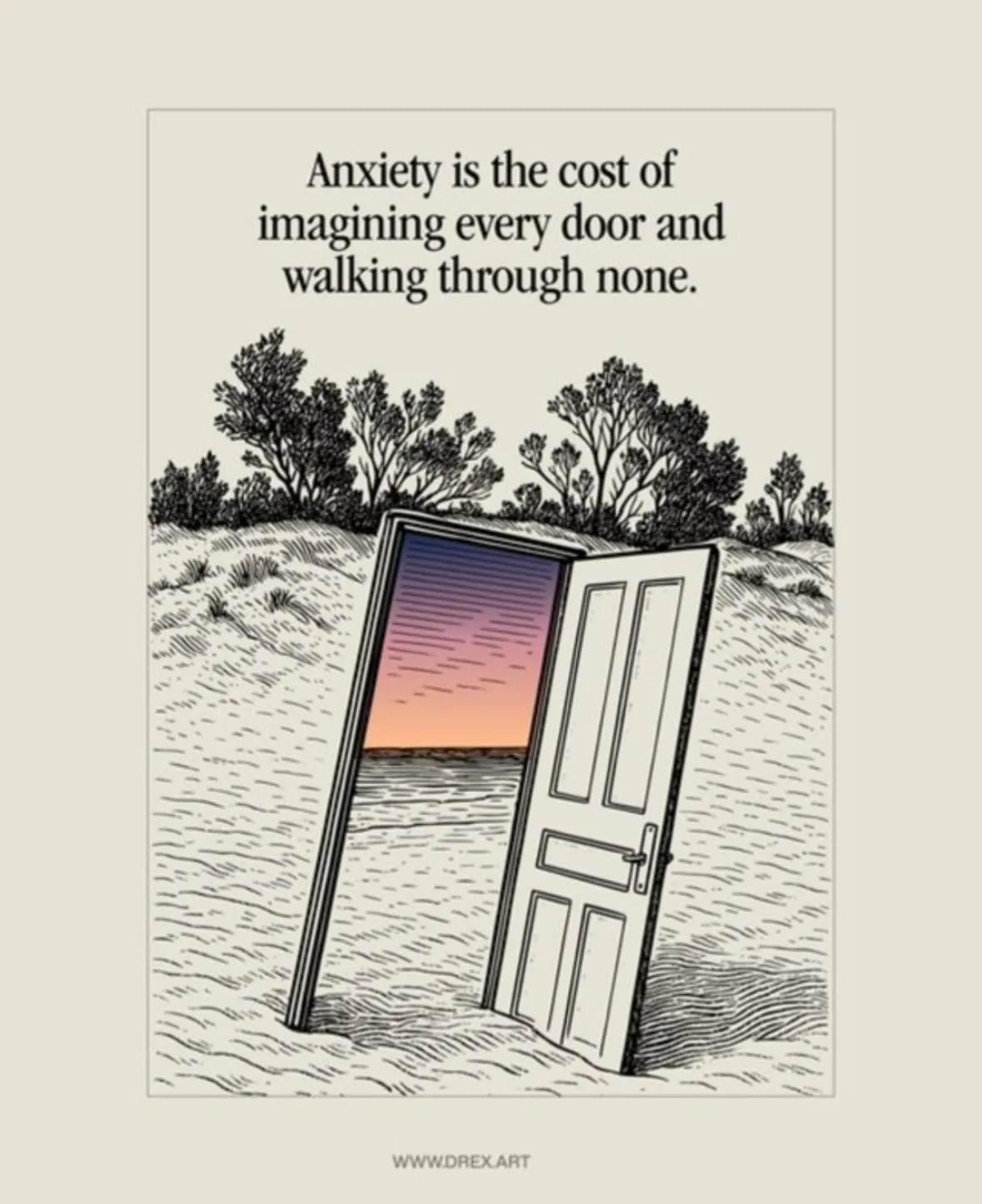
“Anxiety is the cost of imagining every door and walking through none.”
Image by drex.art
When I was a kid, I believed I was stuck. There were doors everywhere… so many choices, each one revealing a different future… and yet none of them looked open from where I stood. What if I picked the wrong one? What if I walked through one door and regretted it?
So I stayed still.
But when I finally moved, even just a little, the view shifted. The doors hadn’t been closed or locked; I just couldn’t see the open ones from where I was standing still.
The doors are all different, just like the rooms they lead to. Some close before you reach them, while others open to spaces where everyone is performing… not maliciously, but like actors in a rehearsal for a play no one wrote, following scripts they’ve memorized but never questioned.
Then there are other rooms with enough air for everyone to breath, where conversations happen instead of performances and you’re not auditioning for acceptance. In these spaces, you’re simply seen; simply heard.
Once you’ve walked through enough doors, you start to recognize the different kinds of rooms they lead to and which purposes they serve. Some rooms drain your energy while others restore it, and most exist in between: places where you can sense both the careful presentations and the genuine moments.
You learn to notice the signs: Does the conversation shift when you share something real? Do people ask follow-up questions, or do they wait for their turn to speak? Are you remembering names and stories, or just managing impressions? These small moments reveal whether you’re in a space that nourishes or depletes.
In the best rooms, people care about people, not just performance, optics, or narrative. They speak without masks and listen without pretense. These are the spaces worth seeking, though you won’t find them by standing still.
You find them by walking, by choosing, by showing up. What matters isn’t which door you choose or which room you find: it’s the walking itself and the courage to move when you can’t see the outcome.
When you’re standing still, you can only see doors from one angle, but when you start walking, your perspective shifts. New pathways appear, and doors that were hidden become visible. The walking teaches you, not through the destinations but through the act of choosing, again and again.
Each step forward becomes a lesson in itself. Every door teaches you something.
Some teach you where you belong. Others teach you where you don’t. Both lessons have value.
Note:
This piece emerged from coming across drex.art’s image of a door and recognizing something familiar in its symbolism. Each transition I’ve gone through professionally (software engineering → data engineering → leading data team → consulting), required stepping through doors without knowing what waited on the other side.
The rooms that gave me clarity were obvious gifts. The uncomfortable ones taught me something equally valuable: they gave me language for who I am and how I want to show up in the world.
Some doors led to dead ends, others to unexpected breakthroughs. But each choice taught me something that standing still never would have.
